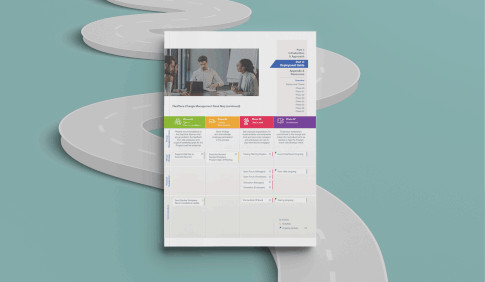In part one of this post, we discussed what true organizational diversity looks like. Now, we’ll turn to why this can be so challenging to create, and ways to overcome those challenges to create a culture that fosters diversity of thought.
The Challenge of Creating Diverse Teams and Workplaces
As previously mentioned, Google spent millions studying its employees and evaluating 180 teams in an effort to pinpoint the traits of the perfect team. Despite their best efforts, the answer was elusive. Researchers were unable to identify patterns or characteristics that were shared among the most successful teams.
Google then began examining the culture of each team, rather than the individual composition. Once again, they found that the hundreds of teams studied had cultures as diverse as their participants. Some were loud and boisterous and allowed team members to speak over one another in meetings, while others were quiet, conversational turn-takers. Some teams spent time together in and out of the office, while others came together only at work. However, researchers were eventually able to determine that whatever the culture, the most successful teams were inclusive. They welcomed contributions from all members and gave each individual an equal opportunity to share.
There is no perfect formula to build a dream team. We cannot take a splash from Skillset A, a pinch from Experience B, and dashes of youth and experience to create a winning combination. But crafting a culture that respects and fosters diversity of thought is the best possible way to build successful teams in the workplace.
Tips to Create a Culture that Fosters Diversity of Thought
We know that picking and choosing a diverse array of individuals isn’t enough to build the peak performance culture organizations seek, so what can be done to foster diversity of thought at the team and organizational level?
A conscious hiring strategy is the first step. Managers and human resources professionals should take care to develop and maintain diversity of thought by hiring a mix of “people-people” and “data-people.” These two groups bring valuable emotional intelligence and analytical capabilities to any organization, but it’s important to strike a balance and continue to maintain it as individuals enter and leave the organization.
Beyond hiring, a diverse culture requires continuous intention. To build and maintain diversity of thought, organizations must make a conscious effort to move away from what’s comfortable, make room for disagreement, and facilitate exploration. For example:
- Leaders should be encouraged to network in non-traditional spaces and should view outsiders as an asset. Networking with others in a similar position can be valuable, but networking outside of one’s comfort zone can benefit everyone. Some organizations promote this kind of interaction with mentorships, while other leadership coaches recommend going outside the organization to work with others in related but different fields. What might you learn if you talked to someone totally different from you? For example, one hospital was trying to create the ideal emergency room. Instead of talking to doctors, nurses, and others in the field, they sought out the advice of a NASCAR pit crew. With similar requirements (safety, accuracy, and efficiency) but different points of view, the hospital was able to implement strategies that would never have occurred had they kept the discussion internal.
- Intentional meeting facilitation can also foster diversity of thought. Consider design thinking techniques like a pre-mortem. Or, when everyone in a meeting agrees on a course of action, stop and ask team members to poke holes in the plan. Playing “devil’s advocate” gets a bad rap, but it is an effective way to tease out fresh thoughts and get people to think outside of the usual conversation. “What aren’t we saying that we should?”
- Consider asking when you don’t know. While living abroad for a few years, I made my share of social missteps. In the spirit of learning, I would always seek out someone among the ex-pats and others who could tell me about local customs and culture. They let me know what different nationalities might find funny, offensive, edible, or ethical. These are the important conversations which can enrich not only our experience, but our ability to make an impact.
At The Clearing, we use the PERIMETER Prime to facilitate productive meetings with diverse ideas. We start by acknowledging a simple fact: the usual conversation creates the usual results. When a group enters a meeting, they are bound by a shared fence separating what they accept and reject in conversation. By expanding the fence into an available space and then beyond into an extraordinary space, the group clears the way for “red dot moments.” These are moments of insight that would never have been available without someone sharing an honest perspective beyond the group’s typical conversation.
Ultimately, diversity of thought can take many shapes. It can happen in boisterous groups and in quiet ones. It can happen in organizations staffed by engineers and organizations staffed by artists. The key to a successful, diverse organizational culture is that it must be fostered with intent. Take time today to nurture and maintain a careful balance in which all perspectives in your organization are given a voice.
Do you need a fresh perspective? Talk to The Clearing today about your organizational culture.


